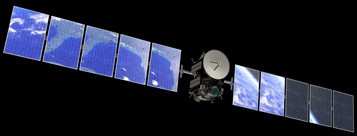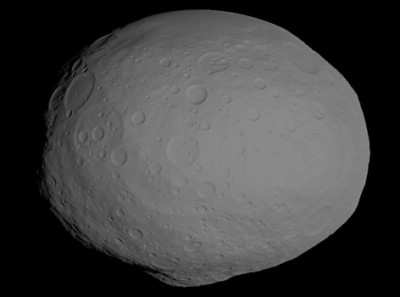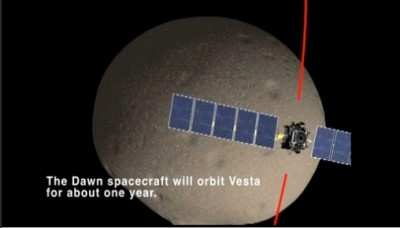Dawn Spacecraft Expected To Enter Orbit Around Vesta July
16
NASA's Dawn spacecraft is on track to begin the first extended
visit to a large asteroid. The mission expects to go into orbit
around Vesta on July 16 and begin gathering science data in early
August. Vesta resides in the main asteroid belt and is thought to
be the source of a large number of meteorites that fall to
Earth.

Dawn Spacecraft
"The spacecraft is right on target," said Robert Mase, Dawn
project manager at NASA's Jet Propulsion Laboratory (JPL) in
Pasadena, Calif. "We look forward to exploring this unknown world
during Dawn's one year stay in Vesta's orbit."
After traveling nearly four years and 1.7 billion miles, Dawn is
approximately 96,000 miles away from Vesta. When Vesta captures
Dawn into its orbit, there will be approximately 9,900 miles
between them. They will be approximately 117 million miles away
from Earth.
After Dawn enters Vesta's orbit, engineers will need a few days
to determine the exact time of capture. Unlike other missions where
a dramatic, nail-biting propulsive burn results in orbit insertion
around a planet, Dawn has been using its placid ion propulsion
system to subtly shape its path for years to match Vesta's orbit
around the sun. Images from Dawn's framing camera, taken for
navigation purposes, show the slow progress toward Vesta. They also
show Vesta rotating about 65 degrees in the field of view. The
images are about twice as sharp as the best images of Vesta from
NASA's Hubble Space Telescope, but the surface details Dawn will
obtain are still a mystery.

Vesta Asteroid
"Navigation images from Dawn's framing camera have given us
intriguing hints of Vesta, but we're looking forward to the heart
of Vesta operations, when we begin officially collecting science
data," said Christopher Russell, Dawn principal investigator, at
the University of California, Los Angeles (UCLA). "We can't wait
for Dawn to peel back the layers of time and reveal the early
history of our solar system."
Dawn's three instruments are all functioning and appear to be
properly calibrated. The visible and infrared mapping spectrometer,
for example, has started to obtain images of Vesta that are larger
than a few pixels in size. During the initial reconnaissance orbit,
at approximately 1,700 miles, the spacecraft will get a broad
overview of Vesta with color pictures and data in different
wavelengths of reflected light. The spacecraft will move into a
high altitude mapping orbit, about 420 miles above the surface to
systematically map the parts of Vesta's surface illuminated by the
sun; collect stereo images to see topographic highs and lows;
acquire higher resolution data to map rock types at the surface;
and learn more about Vesta's thermal properties.

NASA Image
Dawn then will move even closer, to a low-altitude mapping orbit
approximately 120 miles (200 kilometers) above the surface. The
primary science goals of this orbit are to detect the byproducts of
cosmic rays hitting the surface and help scientists determine the
many kinds of atoms there, and probe the protoplanet's internal
structure. As Dawn spirals away from Vesta, it will pause again at
the high-altitude mapping orbit altitude. Because the sun's angle
on the surface will have progressed, scientists will be able to see
previously hidden terrain while obtaining different views of
surface features.
 ANN's Daily Aero-Linx (04.15.24)
ANN's Daily Aero-Linx (04.15.24) Classic Aero-TV: 'No Other Options' -- The Israeli Air Force's Danny Shapira
Classic Aero-TV: 'No Other Options' -- The Israeli Air Force's Danny Shapira Aero-News: Quote of the Day (04.15.24)
Aero-News: Quote of the Day (04.15.24) Airborne 04.16.24: RV Update, Affordable Flying Expo, Diamond Lil
Airborne 04.16.24: RV Update, Affordable Flying Expo, Diamond Lil ANN's Daily Aero-Term (04.16.24): Chart Supplement US
ANN's Daily Aero-Term (04.16.24): Chart Supplement US





